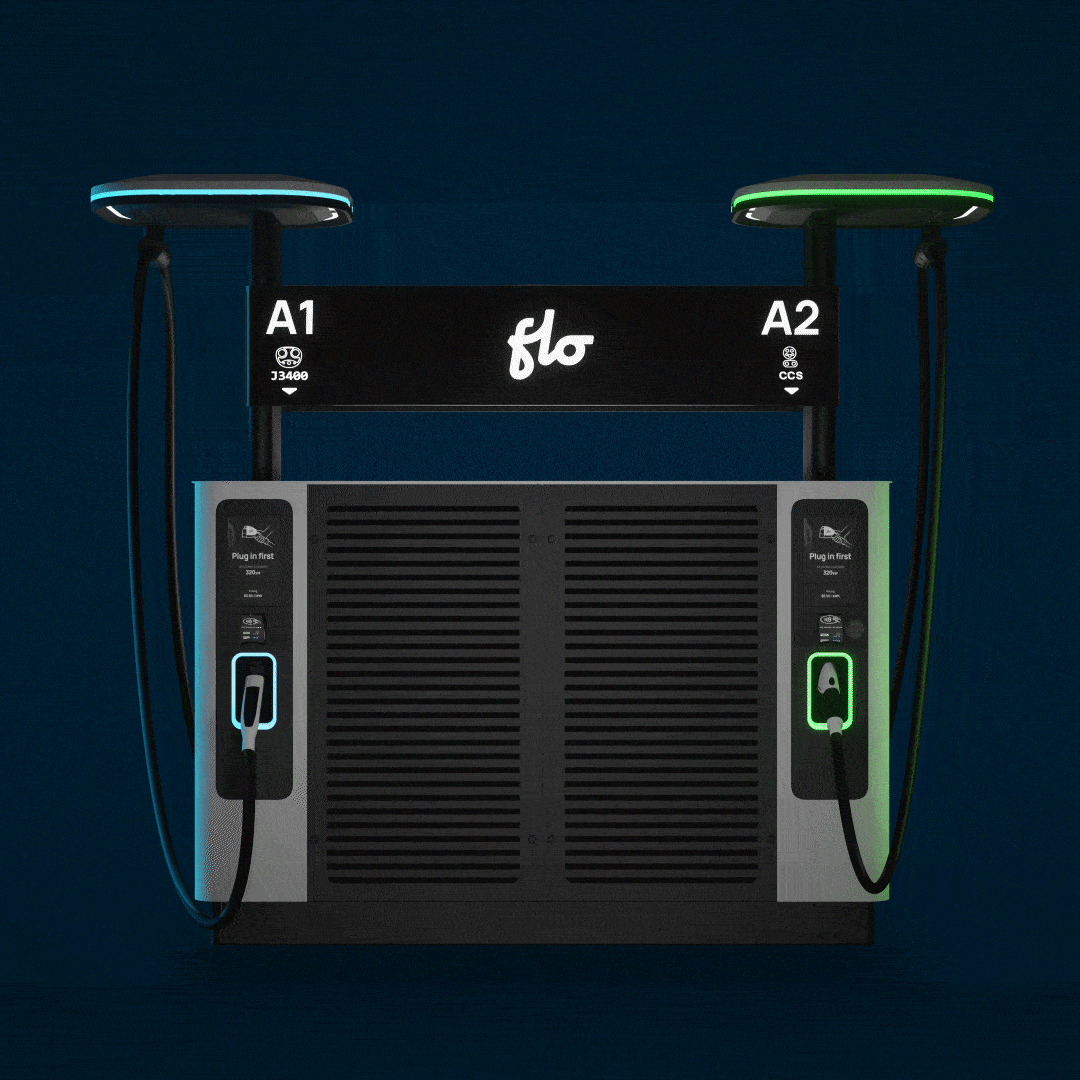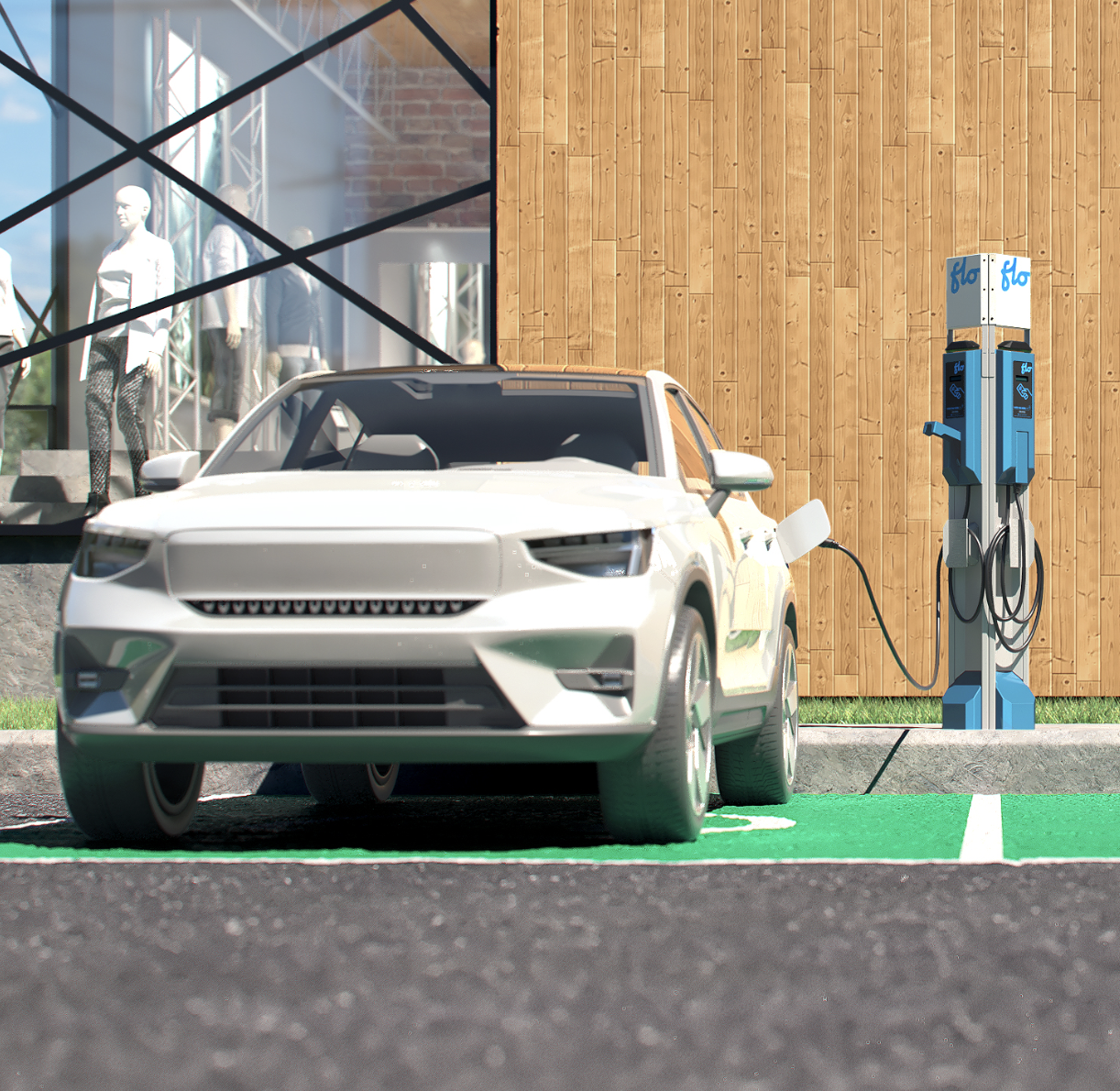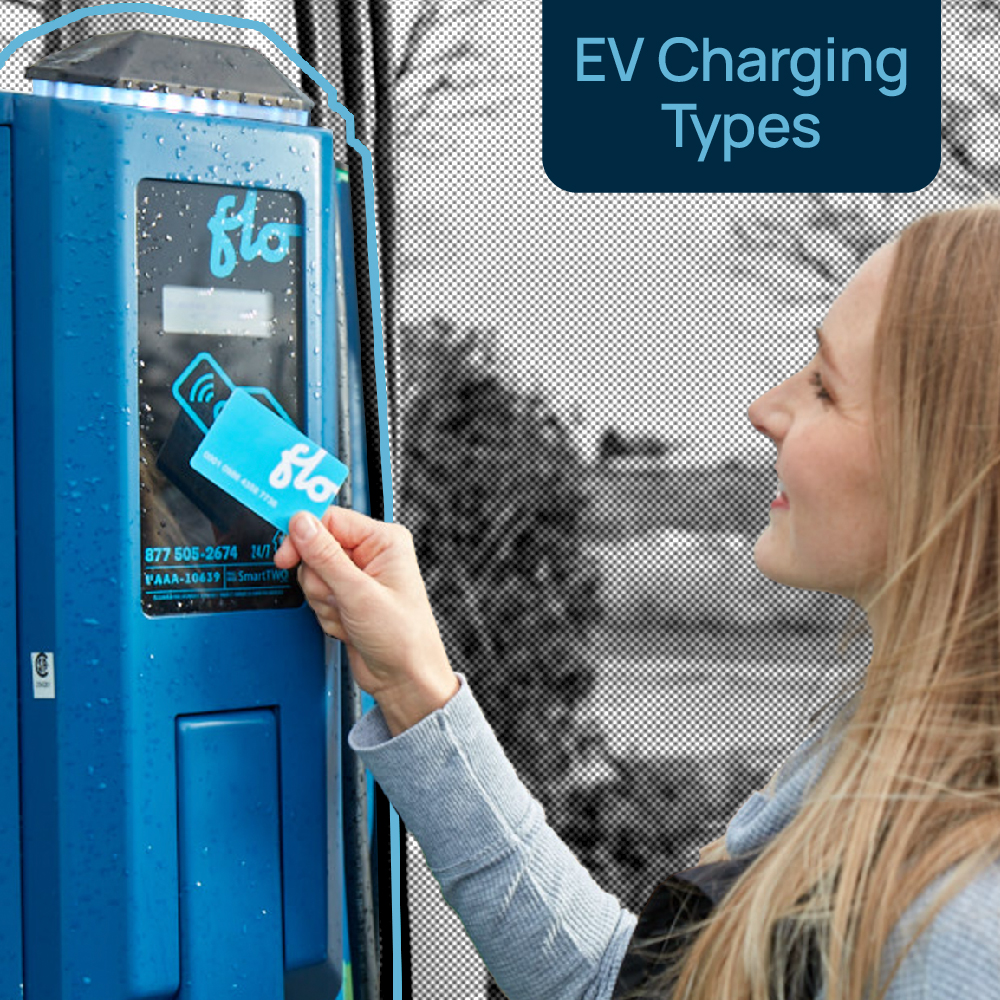Advancing public EV charging: it takes a village (and policies!)
By Cory Bullis, Public Affairs Director at FLO
If you’ve read my previous article, you probably understand why access to overnight charging is imperative. (If not, it’s over here!). Democratizing access to EVs for all communities and all income levels hinges on public charging infrastructure. And while what we call curbside charging – EV charging networks deployed to support street parking – promises to be a critical infrastructure solution, it will not be built overnight.
In short, it takes a village to make curbside charging a reality. And it all starts with policymaking. If you hope to see a curbside charger in your community someday, here are some critical market-moving policies and planning efforts to consider.
Set a curbside charging station deployment goal for public EV charging
Developing planning documents that specify curbside charging deployment goals clearly signals to the industry a local government’s commitment and helps align municipal partners critical to deployment. This helps get charging companies interested in deployments. For example, the New York City Department of Transportation aims to deploy 1,000 curbside chargers by 2025 and 10,000 by 20301, an outgrowth of them.
Estimate statewide curbside EV charging needs
Many states have assessed statewide infrastructure needs to support their EV adoption goals, including for multi-family housing2. By estimating how curbside charging infrastructure can play a role in helping support multi-family housing residents who can’t cost-effectively charge in-building, states can signal to local governments and utilities just how much potential this solution offers to bolster achievement of local EV adoption goals.
Specify right-of-way locations eligible in public EV charger incentive programs
It’s easy to forget that right-of-way locations have the potential to host chargers and serve underserved market segments and use cases (i.e., multi-family housing, workplaces, and public locations). If not specified in the program guidelines, program administrators often unintentionally preclude applicants from considering this option. To ensure a charger is installed close enough to support the target use case, FLO recommends setting a ¼-mile or ½-mile perimeter around the desired area.
Read more: Choosing the public charging solution that is “just right”
Ensure incentive amounts adequately cover varying install costs for curbside chargers
Like with other types of chargers, the cost to install “make ready” infrastructure to support curbside chargers can vary site by site. It’s critical for incentive programs, especially rebate programs, to take this into consideration. Otherwise, incentive programs may unintentionally disadvantage curbside charging deployments, creating missed opportunities for deployments to provide important equity benefits to communities.
Standardize local permitting applications and processes
Where applicable, local governments should publish online:
- Guidance and requirements for curbside charging deployments.
- Checklists of all information required for right-of-way permit applications. (Check out California’s Governor’s Office of Business & Economic Development model checklists)
- Descriptions of the process and timelines for permit review and approval. (California, as an example, requires local governments to respond to permit applications within five business days of submission for projects containing 1 to 25 chargers, and ten business days for projects over 25 chargers.)
This provides certainty for curbside project planning, preventing potential delays that can create inefficiencies and drive up project costs. For example, the Washington DC Department of Transportation and its local utility, PEPCO, have published right-of-way permit application requirements that can serve as an informative model.
Become “curbside ready” by identifying sites and existing infrastructure with the greatest potential for public EV charging
Local stakeholders that preemptively map out ideal curb locations for chargers reduce uncertainty for the industry with the site selection and permitting process and increase optimal locations to place charging. Both the City of Sacramento and the Washington DC Department of Transportation have published this kind of map online, ultimately simplifying the process.
The same applies to existing infrastructure –– early assessments of infrastructure that are well-suited to host mounted chargers (i.e., streetlights, wooden or metal poles) simplifies the site selection process.
And there’s an added benefit: getting curbside ready across any of these use cases increases the ability for local governments, utilities, and charging companies to compete for state and federal funds because the project is regarded as more “shovel ready”.
Standardize joint use agreements between utilities and cities
In many cases, a local government may decide to host their public EV chargers on utility-owned infrastructure, pending collaboration and agreement with the utility. In that case, joint use agreements are needed to govern obligations between the two parties related to the chargers.
By developing standardized agreements that can apply to a multitude of use cases, they can reduce project timelines and unnecessary administrative burdens that may hamper individual agreements for future deployments.
Set flat session rates for electric vehicles charging overnight
To recreate the home charging experience and maintain equitable outcomes, it’s best to set a flat session fee for overnight charging. This encourages garage orphans to prioritize overnight charging to benefit from a full battery in the morning.
There’s an added practicality here: no driver wants to get up in the middle of the night to move their car to avoid additional charging session fees. For example, Portland General Electric is proposing a $3 flat fee for curbside Level 2 charging and a $5 flat fee for curbside DCFC charging.
Cities and utilities are catching on to the need and benefit of public EV charging, as evidenced by real-world curbside deployments and the policies leveraged to make them possible. While instituting these policies will go a long way toward creating a robust and holistic framework that attracts private investment into a community, they won’t guarantee successful deployment of curbside charging infrastructure.
That’s where the FLO team comes in. Reach out to us, and we’ll work together on bringing more EV charging stations to a curb near you!
const es=document.getElementById(‘content-area’).getElementsByTagName(‘a’); for (const element of es) {
element.setAttribute(‘target’, ‘_blank’);}










